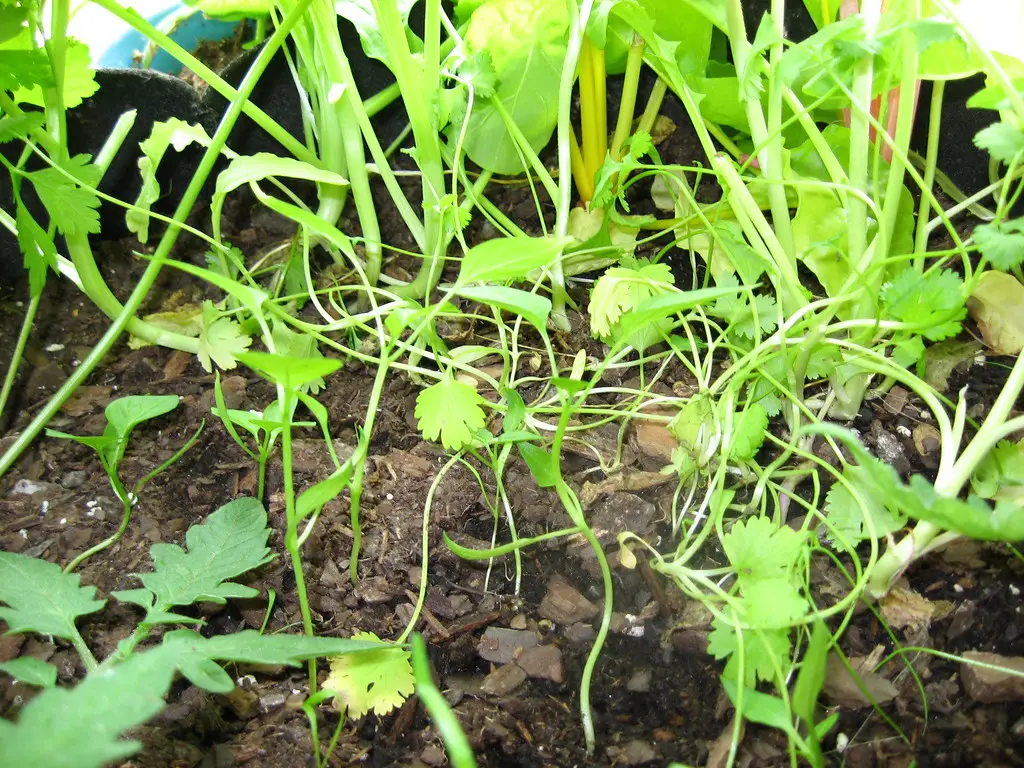Cilantro, known as coriander in some parts of the world, is a versatile and popular herb used in many cuisines. Its unique flavor is a cornerstone in dishes such as salsas, curries, and salads. The fresh leaves, known as cilantro, and dried seeds, called coriander, both provide different yet complementary flavors and aromas.
Cilantro is an annual herb that is relatively easy to grow in gardens or containers, making it accessible for home gardeners. It thrives in cool weather and is often planted in spring and fall. The entire plant is edible, including the stems, leaves, flowers, and seeds, allowing for various culinary applications.
The popularity of cilantro extends beyond the kitchen, as it’s also recognized for potential health benefits. Its antioxidant properties and the presence of essential vitamins make it a nutritious addition to the diet. Cultivating and caring for cilantro at home ensures a fresh and continuous supply of this valuable herb.
| Attribute | Details |
|---|---|
| Common Names | Cilantro, Coriander, Chinese Parsley |
| Botanical Name | Coriandrum sativum |
| Family | Apiaceae |
| Plant Type | Annual Herb |
| Mature Size | 18-24 inches |
| Sun Exposure | Full Sun to Partial Shade |
| Soil Type | Well-drained, Fertile |
| Hardiness Zones | 2-11 |
| Native Area | Southern Europe, Southwestern Asia |
Cilantro Care
Cilantro is an easy-going plant, but attention to proper watering, soil, and light conditions will ensure a robust and flavorful crop. It prefers cool weather and may bolt quickly in the heat, producing seeds rather than leaves.
Regular harvesting of the leaves encourages bushier growth and prolongs the leaf-producing stage. If left to grow, cilantro will flower and produce seeds, which can be harvested and used as the spice known as coriander or saved for replanting.
Light Requirement for Cilantro
Cilantro prefers full sun but will tolerate partial shade, particularly in hot climates. Providing at least 4-6 hours of direct sunlight will encourage healthy growth.
Soil Requirements for Cilantro
Cilantro thrives in well-drained, fertile soil with a pH range of 6.2 to 6.8. Adding compost or organic matter to the soil will enhance its fertility and texture.
Water Requirements for Cilantro
Regular, consistent watering is essential for cilantro, as it prefers moist but not soggy soil. Drip irrigation or a soaker hose is ideal to provide steady moisture without wetting the foliage.
Temperature and Humidity
Cilantro grows best in cool weather, with temperatures ranging from 50 to 85°F (10 to 30°C). Hot weather may cause it to bolt, transitioning from leaf production to flowering and seed production. Cilantro can tolerate some frost but thrives in mild and humid conditions.
Fertilizer
Cilantro generally doesn’t require heavy fertilization. A balanced, slow-release fertilizer applied at planting time can support growth, especially if soil fertility is low.
Pruning Cilantro
Pruning cilantro involves pinching back the tops of the plants to encourage bushier growth. Regular harvesting of the leaves also serves to prune and shape the plant.
Propagating Cilantro
Cilantro can be propagated by sowing seeds directly in the garden or starting them indoors. It doesn’t transplant well, so sowing in place is often preferred.
How To Grow Cilantro From Seed
Sow cilantro seeds directly in the soil about 1/4 inch deep. Space plants 6 to 8 inches apart. Seeds can be sown in spring and fall for a continuous harvest. Germination occurs in 7-10 days.
Common Pests & Plant Diseases
Aphids
Aphids can be controlled with insecticidal soap or by attracting natural predators.
Powdery Mildew
This can be prevented by proper spacing and watering at the soil level to keep foliage dry.
Common Problems With Cilantro
Bolting
Bolting occurs in hot weather and leads to premature seed production. Planting in cooler seasons and regular harvesting can prevent this.
Leggy Growth
Insufficient light can cause weak and leggy growth. Ensuring proper sun exposure can correct this.
Pro Tips
- Plant cilantro in successive sowings every 2-3 weeks for a continuous harvest.
- Harvest cilantro by cutting up to one-third of the leaves at a time.
- Allow some plants to flower and produce seeds if you wish to harvest coriander or save seeds for future planting.
- Grow cilantro near tomatoes and spinach as they make good companion plants.
Cilantro’s diverse culinary applications and potential health benefits make it a valuable addition to any garden or kitchen. Understanding its growing conditions and care requirements will help both novice and experienced gardeners enjoy a bountiful harvest of this flavorful herb. Its rich history and global culinary influence continue to inspire creative dishes and healthy eating.




